A GMC motor-homecoming, 50 years on
From gatherings of historic race cars to the Hemi-centric Roadkill Nights, the track at M1 Concourse in Pontiac, Michigan hosts a wide variety of automotive events. A recent one, held on a cloudy October day, was a bit out of the ordinary. Roughly eighty 1973–1978 GMC Motorhomes arranged themselves in formation on the facility’s skidpad.
They weren’t lost. In fact, they were home; each and every one of these GMCs rolled off an assembly line in that very spot roughly fifty years ago.
Long before M1 Concourse broke ground on its motorsports-centric playground in 2014, the plot of land at the corner of Woodward Avenue and South Boulevard played a key role in General Motors’ truck history. Rapid Trucks built a factory here in 1906, three years before GM bought the company, merged it with another manufacturer (Reliance), and rebranded the married pair under a less-than-creative nameplate: GMC.
After an even bigger manufacturing complex opened just down the road in 1928, the original Rapid plant—now known as old Plant 1—focused on machining and component manufacturing. GMC expanded its footprint in subsequent years, buying neighboring buildings and incorporating them as Plants 3, 4, and 5. While GMC would occasionally build some vehicles on these grounds (namely the original G10 Handi-Van that followed the Corvair 95), there was a much more interesting project waiting in the wings.
The mid-‘60s was a time of sweeping change for the Coach wing of GMC Truck & Coach. After losing a near-exclusive supply deal with Greyhound and being forced by the U.S. Justice Department to provide its unique two-stroke diesels and angle-drive transmissions to rival brands, designers, engineers, and management alike scrambled to brainstorm new ways the division might regain a competitive edge. Jet-age ideas, like luxurious gas turbine low-floor buses with Eames-esque bucket seats, or multi-modal buses that could connect to a Sikorsky Skycrane helicopter, were all apparently on the table, even if only briefly, at one point or another.
One of the more grounded proposals: a “mini bus,” for ferrying suburbanites in less densely-populated areas to larger buses running on higher-frequency routes. The mini bus vehicle concept quickly morphed into a call for a space-efficient multi-purpose commercial vehicle platform. Then, given the booming recreational vehicle market at the time, the decision was made to launch it first as a motorhome.
The resulting GMC Motorhome, which debuted in late 1972 for the 1973 model year, was unlike any other RV on the market, or any other GMC product at the time. A reason for that, perhaps, is the result of its being developed with an independent spirit that was fairly rare within GM.
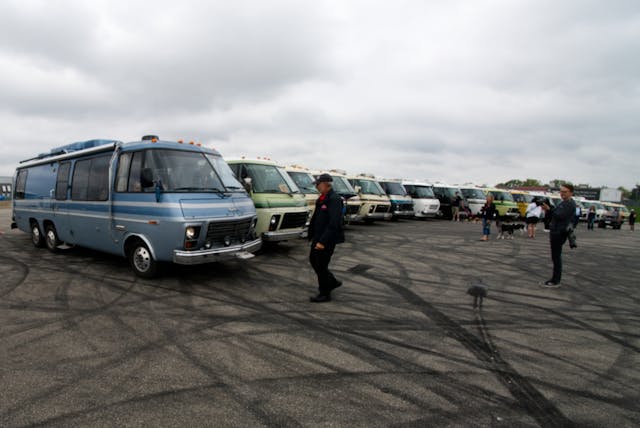
“Traditionally, our advanced design group would think up features that could or should be in a vehicle, and turn it over to the production group to make it reality once we were done,” recalled former Truck & Coach engineer Claude White. “That changed with Motorhome—instead, we were told we would shepherd it all the way to production. And since it wasn’t a high-volume, high-budget project, we had the flexibility and freedom to design this exactly the way we thought a motorhome should be.”
The finished product lived up to the words on the original sales brochure’s cover: “It doesn’t look like a box or ride like a truck.”

The Motorhome’s exterior design stood in stark contrast to the lanky, upright corrugated boxes-on-wheels cranked out by Winnebago and its ilk at the time. GM’s truck studio penned a sleek, smooth-sided vehicle with a tapered nose, wrap-around windshield glass, and plenty of tumble home, lending it a shoulder that carried through all 23- or 26 feet of the vehicle, depending on which length you ordered.
Things were equally interesting underneath the molded-composite skin. The Motorhome’s low profile came courtesy of a unique, low-slung chassis, which was made possible by adopting the 455-cu-in V-8 and front-wheel drive transaxle (collectively dubbed the Unitized Power Package) from the Oldsmobile Toronado. Conventional “dualie” rear wheels were eschewed for an air-sprung tandem bogie arrangement, maximizing available interior space while improving ride quality and allowing for the coach to be self-leveled at campsites.
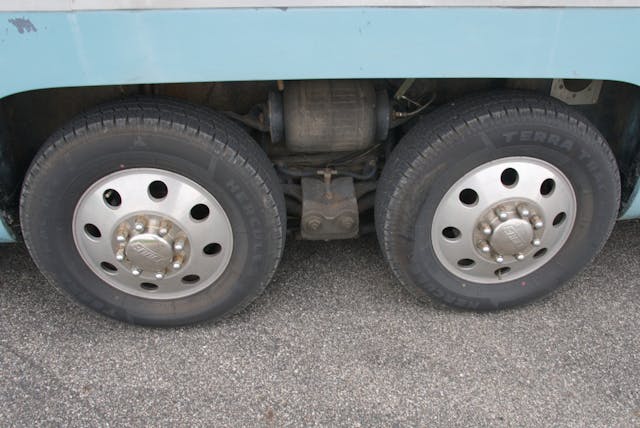
With these innovations and GM’s industry clout, it seemed a safe bet that GMC was about to turn the RV industry on its ear once production kicked off in good old Plant 3 in Pontiac. Time, in the end, was not on the Motorhome’s side. Shortly after GMC filled order books for the entire first year of production, the oil embargo struck, kneecapping the RV industry as a whole. Worse, GM’s interior supplier struggled to keep up with production, leading to a backlog of orders.

By 1975, GM had brought interior upfitting in-house, improving volumes. Meanwhile, the introduction of the Transmode—a blank shell for bodybuilders to convert into ambulances, shuttle buses, and covert urban assault vehicles—allowed the Motorhome to reach new customer bases. Still, it didn’t take long for another major stumbling block to arise.
Oldsmobile had already discontinued its 455 engine in late 1977, forcing GMC to move to the smaller 403 in 1978. Then, plans for vastly downsized 1979 Toronado rendered the Unitized Power Package—the heart of GMC’s chassis design—obsolete. GMC toyed with ideas to find an alternate powerplant or redesign the Motorhome entirely, but it ultimately decided such development costs outweighed the potential return. Production ceased in late 1978, and the plants previously used to build GM’s RV-of-the-future were retooled to crank out more Rally and Vandura full-size G-vans. All told, just shy of 13,000 Motorhomes were built in Pontiac, and roughly 9000 examples are accounted for today.
So why has the GMC Motorhome endured, despite its brief and checkered chapter in the annals of RV history? Many owners present at M1 echoed the very same selling points GMC touted five decades prior:
“It’s the perfect size.”
“It drives so well.”
“It rides like no other motorhome.”

For Marv Miller of Indiana, who’s owned his 1977 example for 15 years and helped encourage several other RVers to join the GMC fold, the attraction is simple: “I was working in the RV industry when these were new. There was almost nothing else like them then, and that’s still the case now.”
If nothing else, it’s impressive to see just how well these homes-away-from-homes have aged. While some original details (namely those original paisley interior fabrics and deep-pile carpets) feel dated, the Motorhome’s overarching design does not come off as something created over a half-century ago.
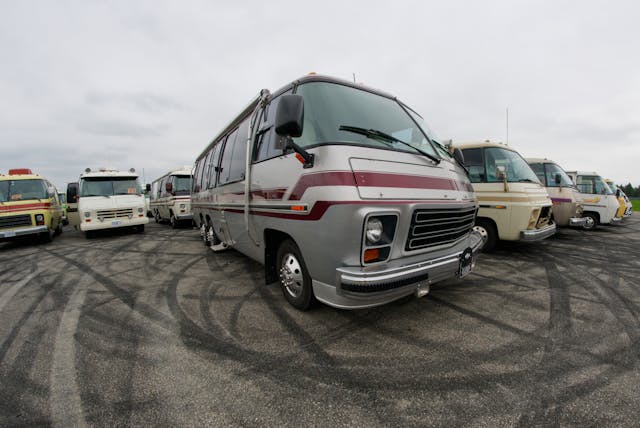
Without a doubt, the Motorhome’s posthumous success is equally due to a tight-knit and supportive owner’s community. Not only have groups like GMC Motorhomes International compiled a rich trove of historical materials and technical information, but members are enthusiastic about helping keep other coaches out on the road. Whether a GMC is treasured in original form, highly restomodded, or is kept running as a scraggly, well-worn machine, there’s no gatekeeping to be found in this club. Every fellow GMCer gets a hearty welcome.

Will the GMC Motorhome’s legacy continue for another fifty years, despite their age and ever-increasing scarcity of specialized parts? That’s hard to say. But where we stand already far surpasses what GMC engineer Karl Gross could have imagined when helping create this vehicle in the first place.
“Someone asked me, ‘what did you think when you designed this motorhome; did you think they’d be around in 50 years?’” Gross told the owners assembled at M1. “I was fresh out of engineering college, on my first job assignment; I never once thought about that, but it’s such a pleasure to see all these still on the road a half-century later.”
***
Check out the Hagerty Media homepage so you don’t miss a single story, or better yet, bookmark it. To get our best stories delivered right to your inbox, subscribe to our newsletters.
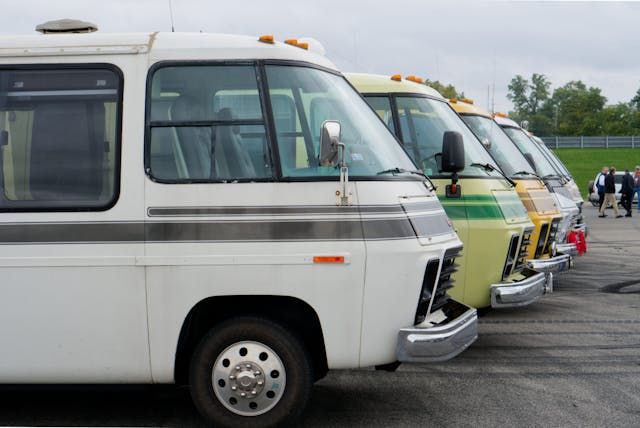
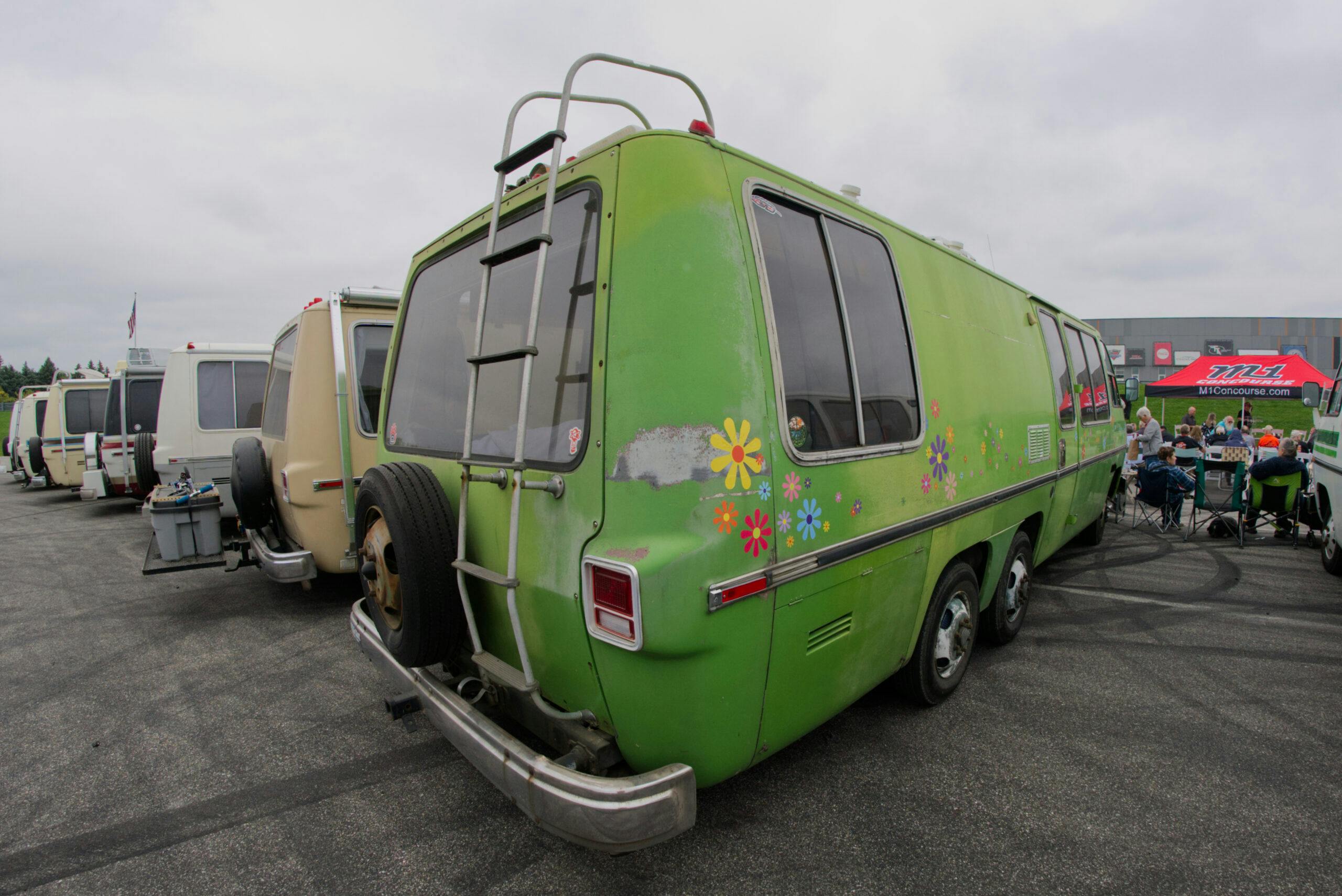
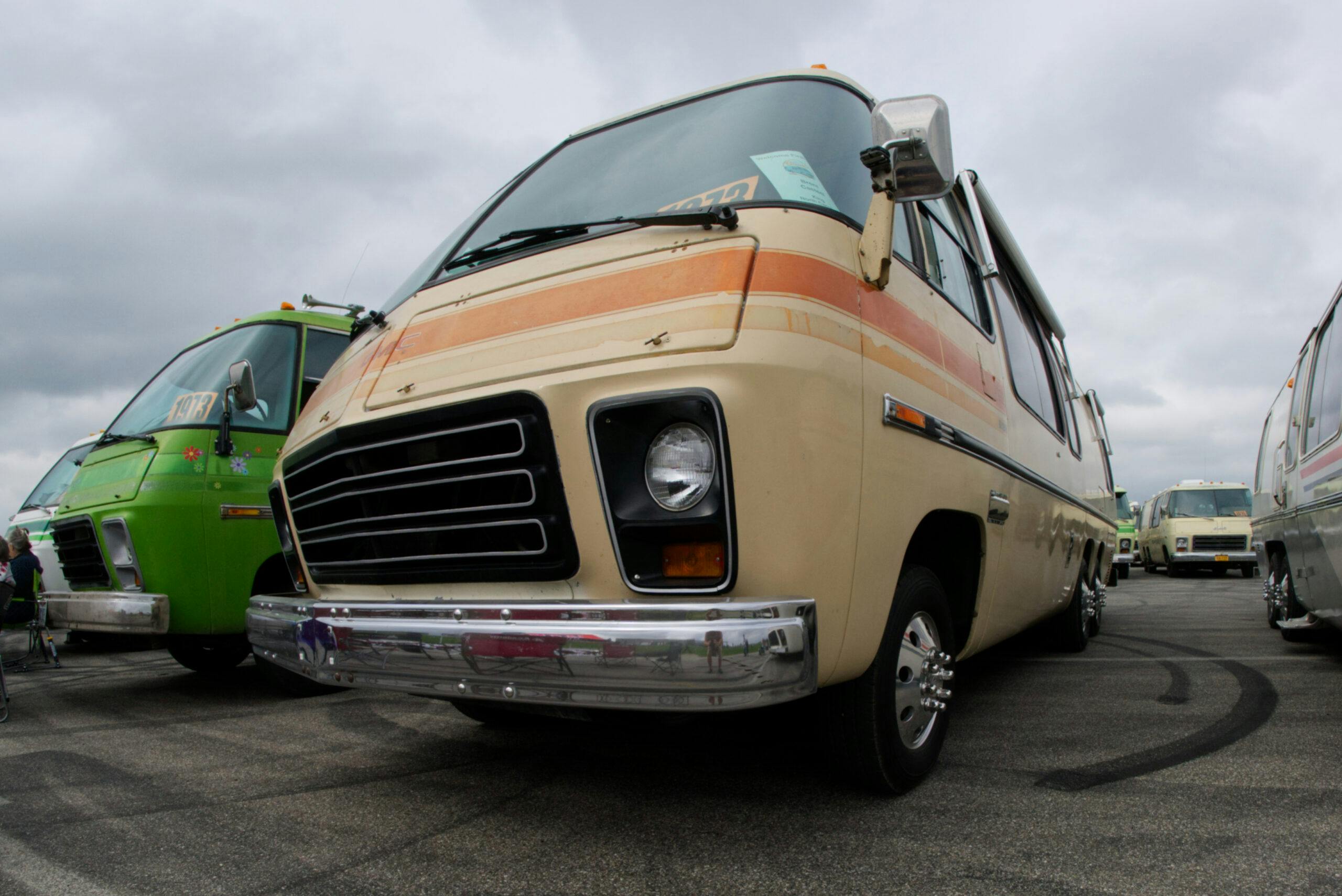
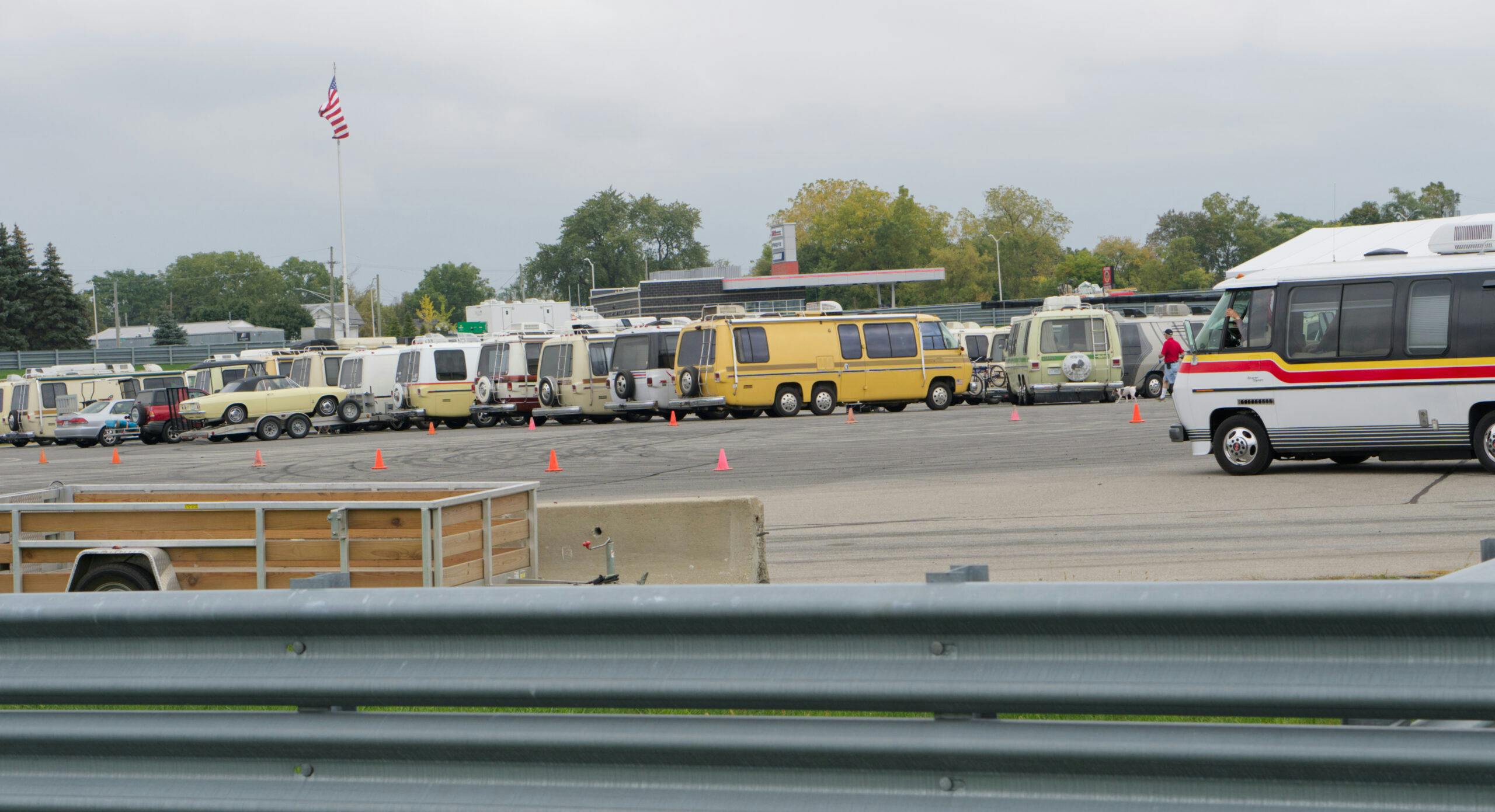
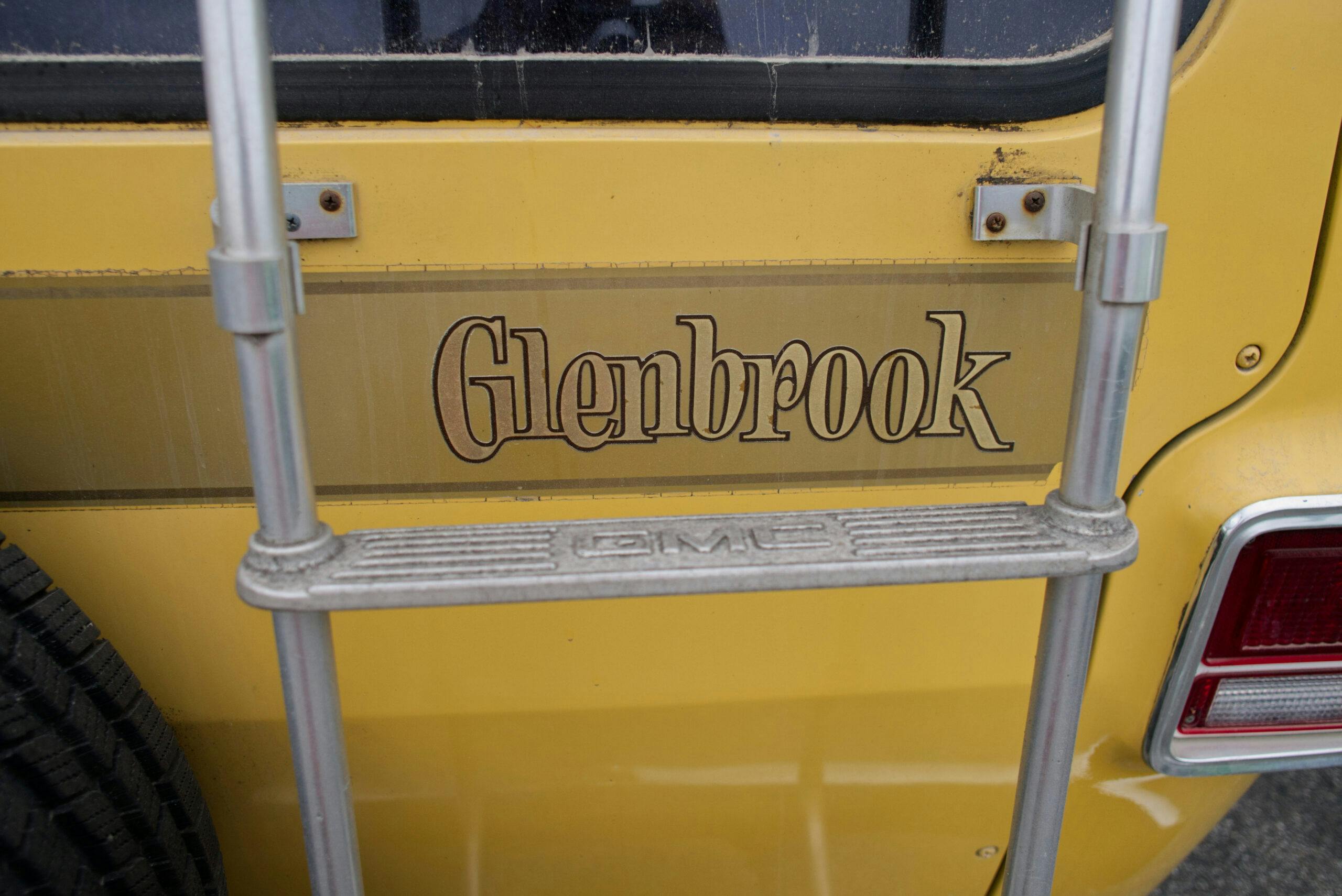
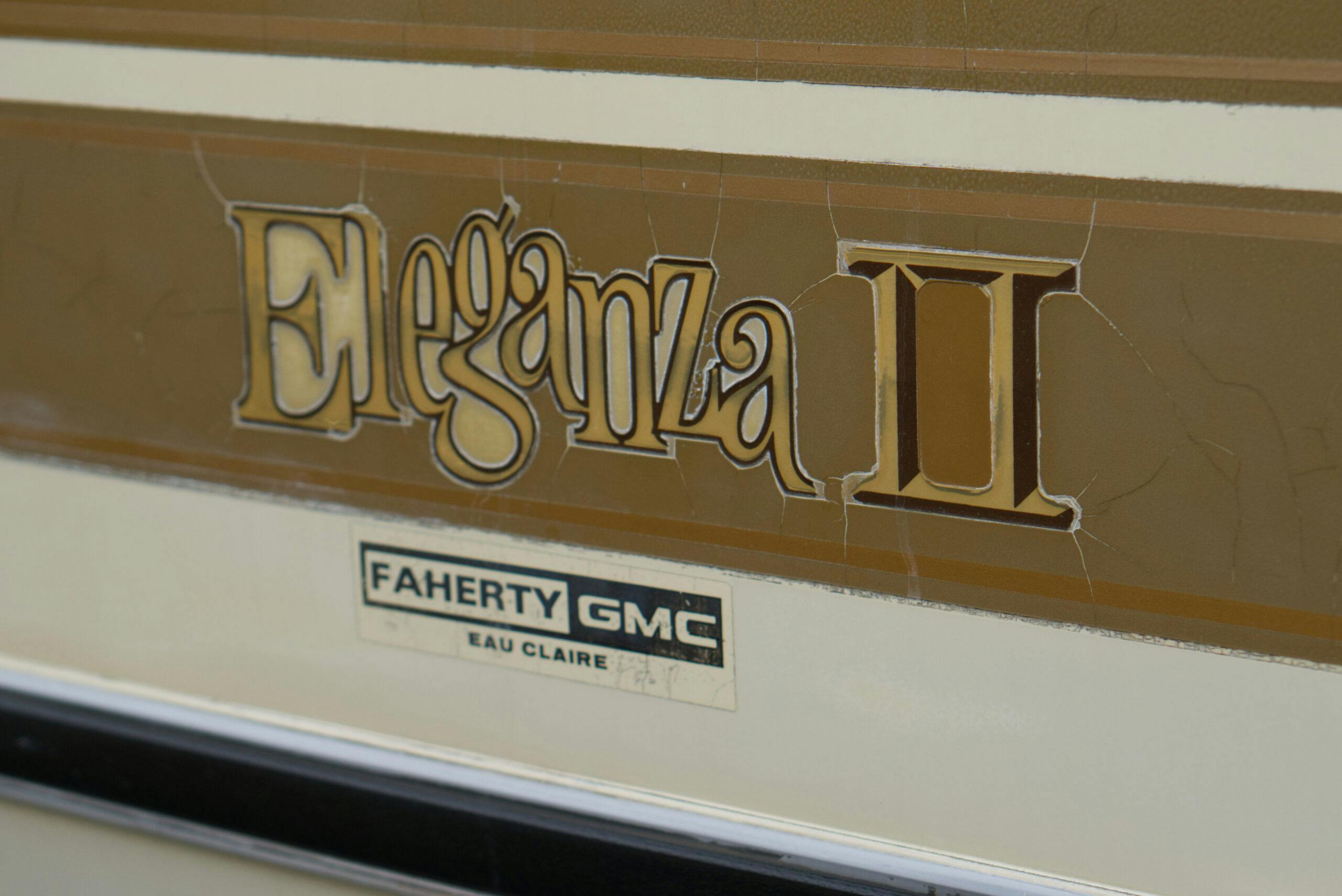
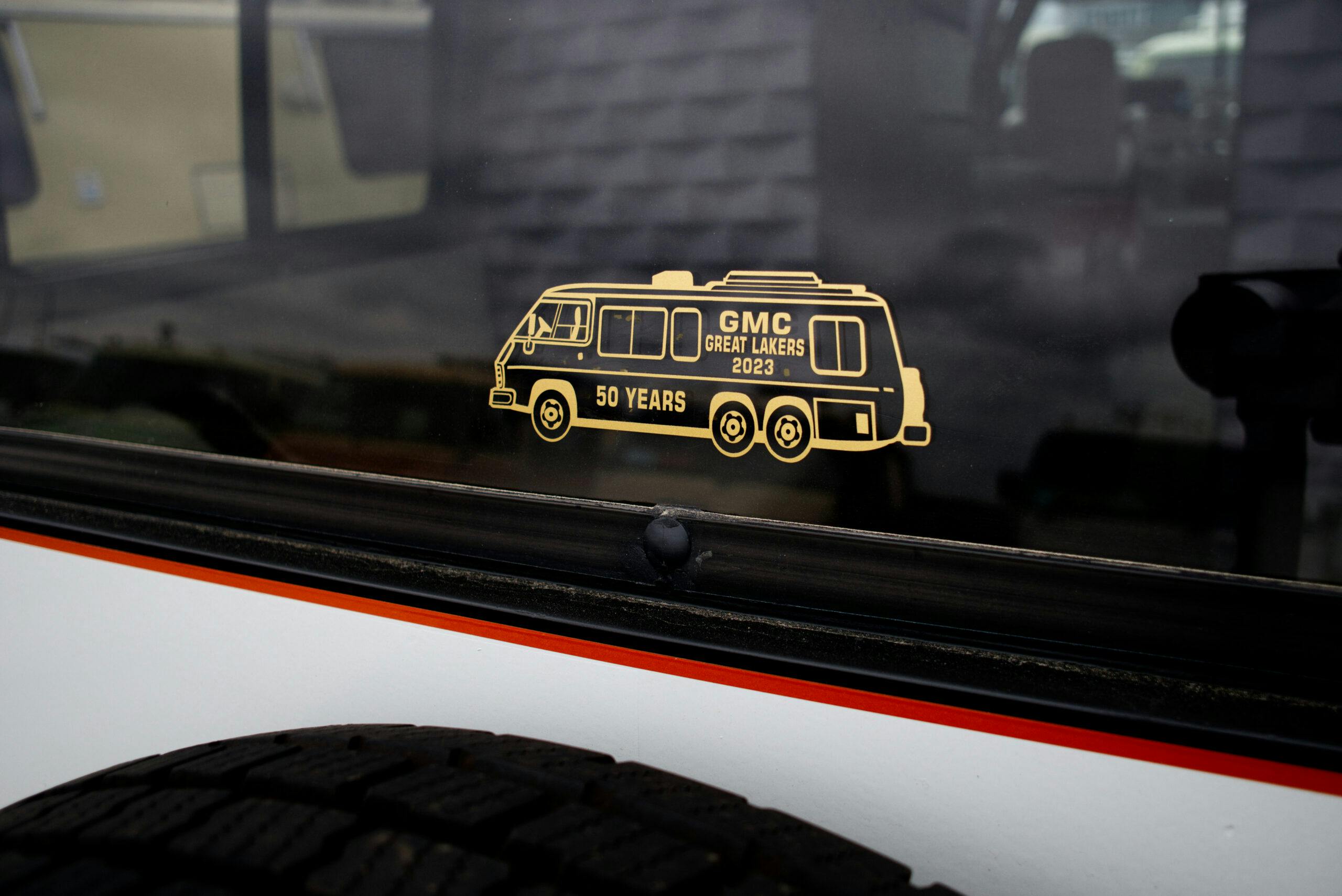

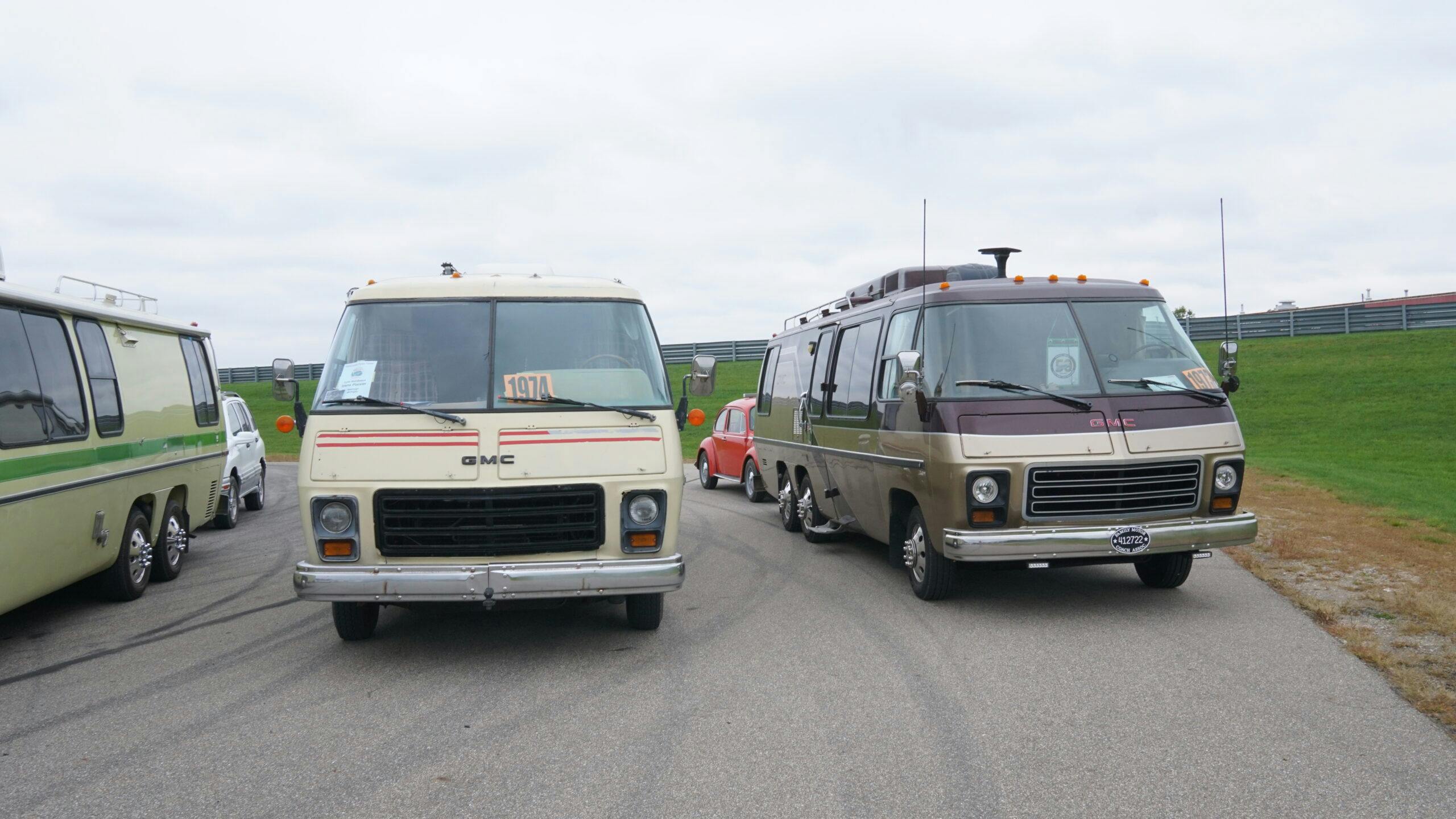
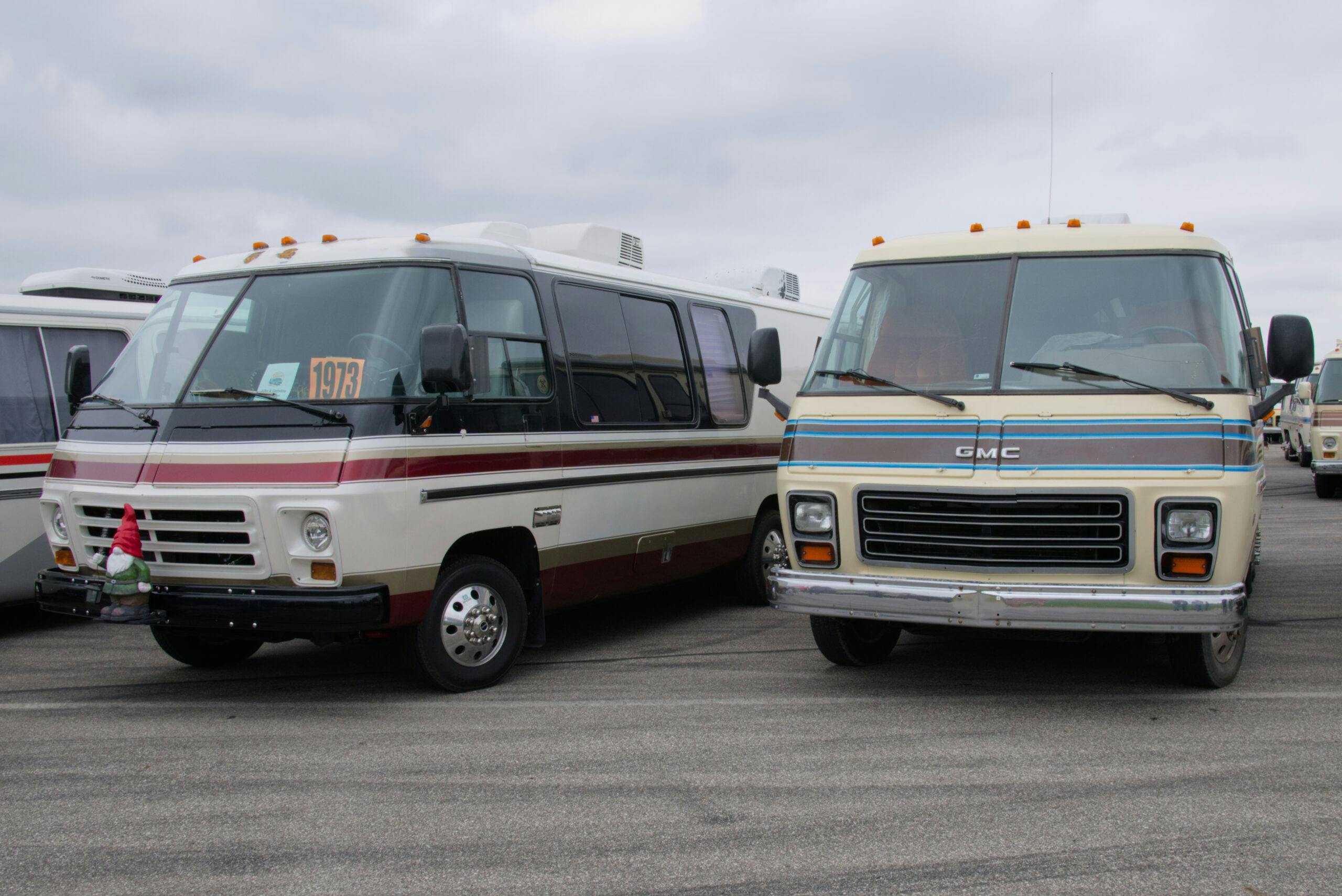

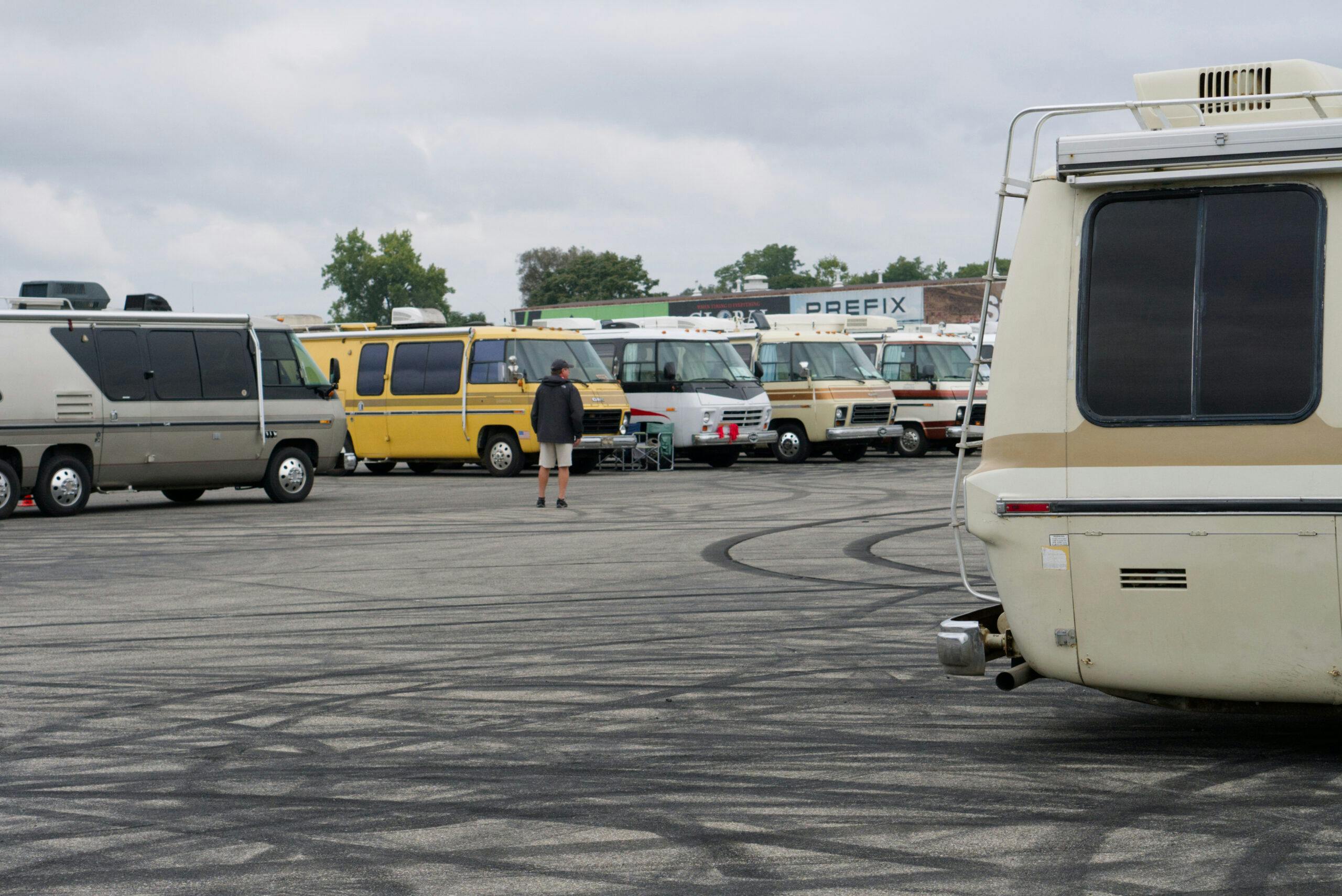

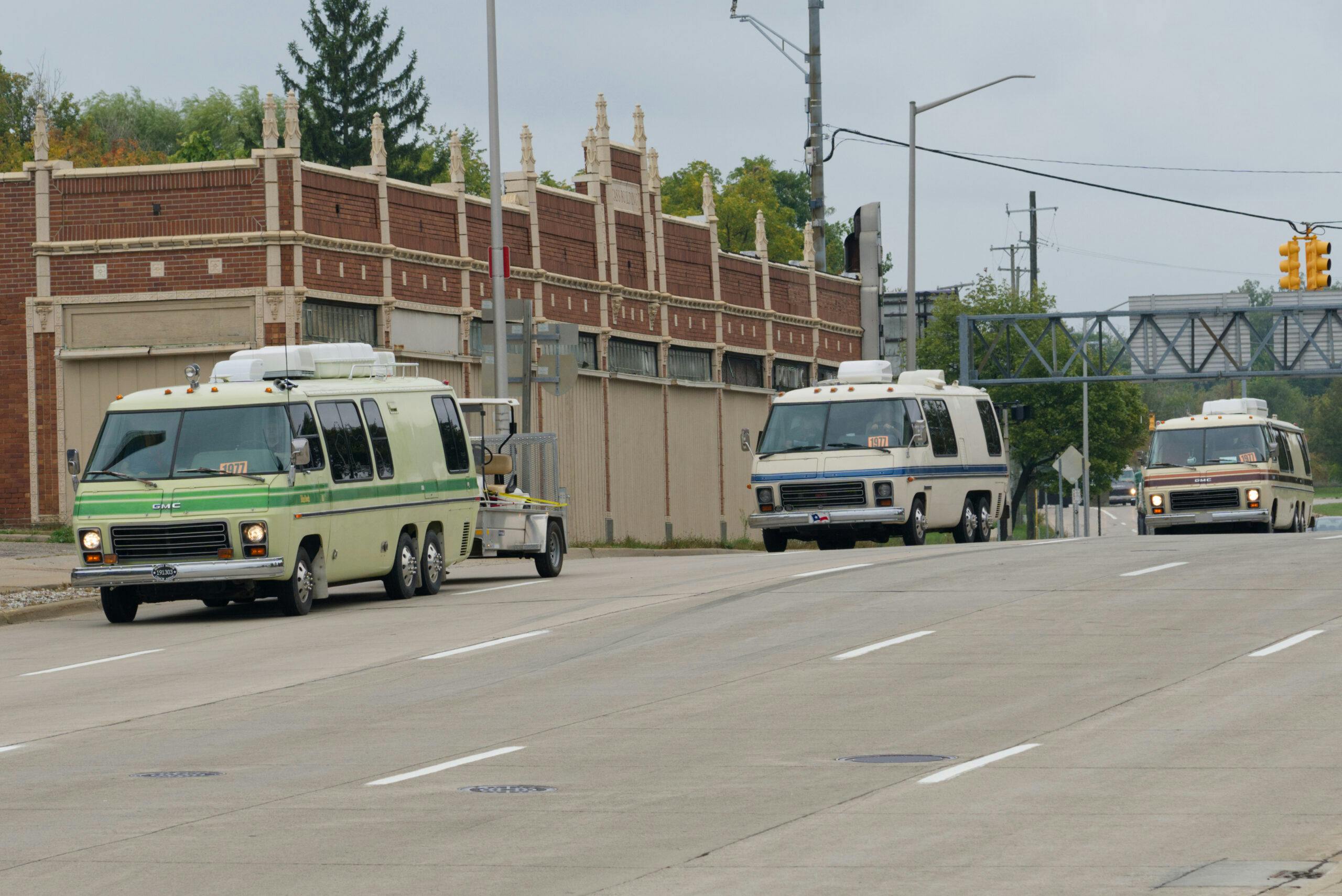

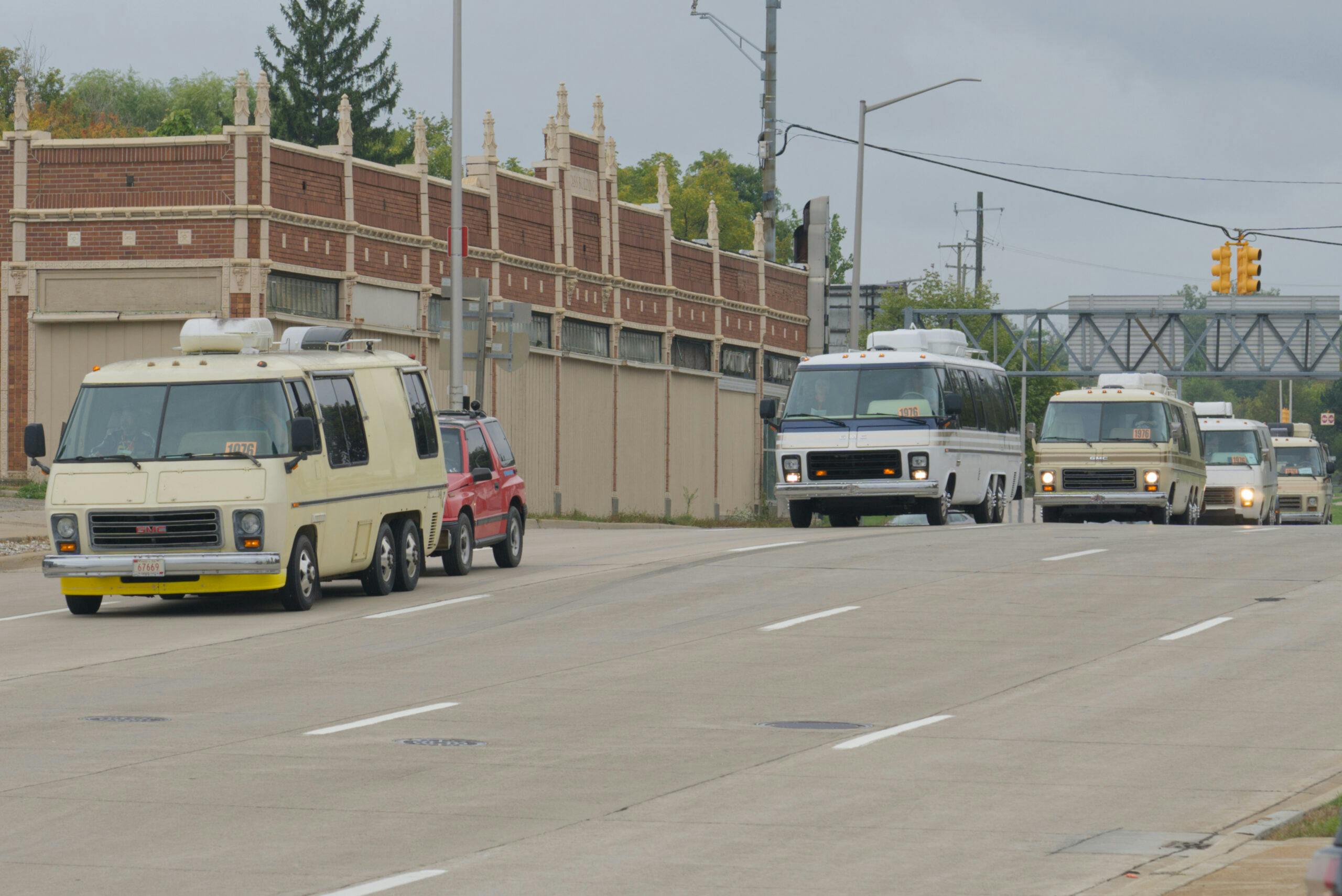
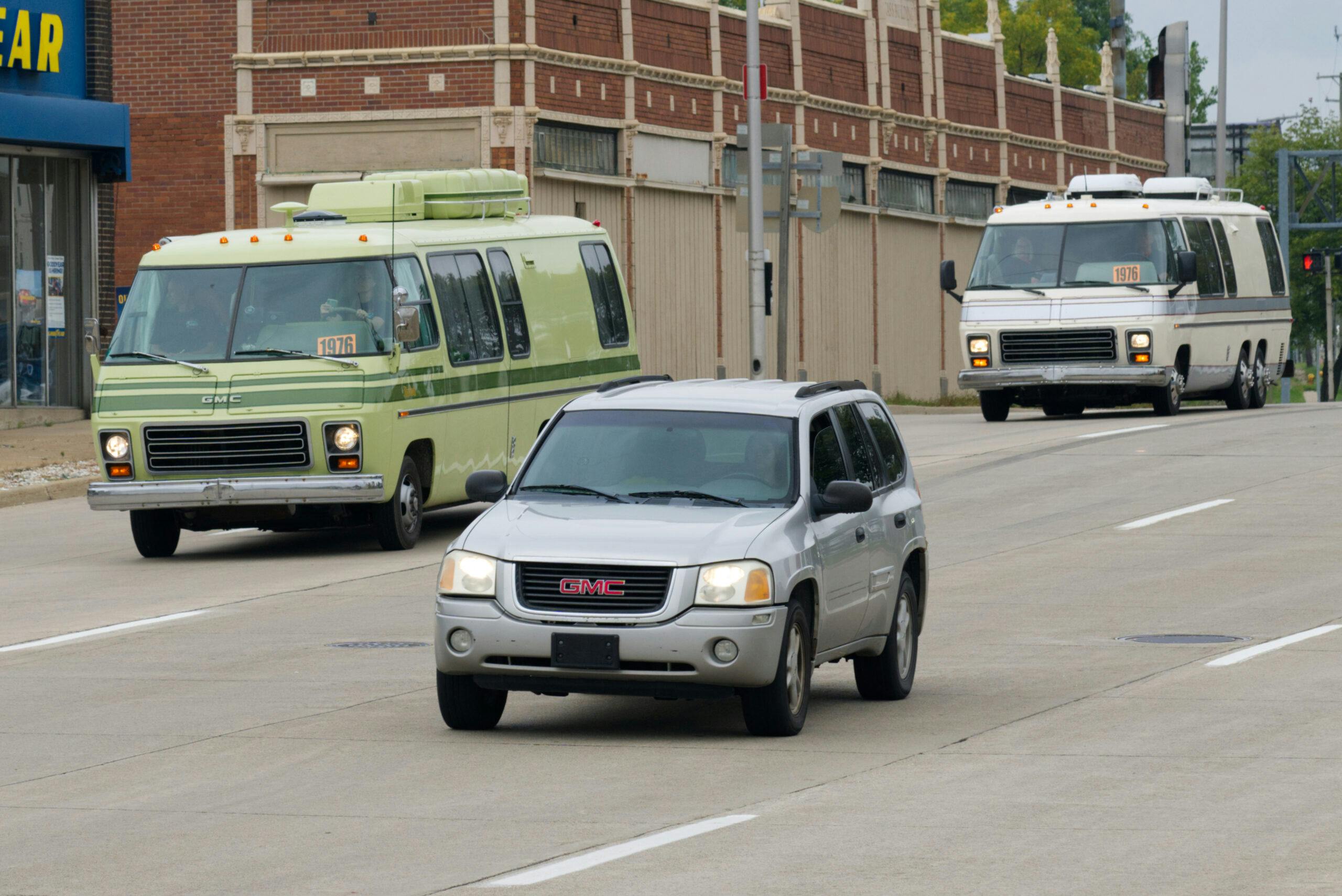


A great event to be sure and definitely the highlight of the GMCMI fall convention! We drove from Texas in our 1977 23 foot GMC. We were so delighted to be able to attend this special event. Definitely a once in a lifetime opportunity…seeing all the GMCs together helps to reinforce just how special these truly unique machines really are.
Chuck and Larry were the two first gentlemen greeting us into the convention.
Not only unique vehicles but a great family of passionate owners and support!
C’mon Hagerty, get on board and insure these things up here in Canada, we need you!!
Cheers!
The Toronado front drive system was over-engineered in a good way. “Obsolete” is a funny word here… continuing to make something you have already designed is often cheaper in automotive stuff. Sounds more like an excuse to kill something chasing more profit elsewhere (which sometimes works).
While these Motorhomes have some Squarebody design elements, you could re-issue them today and I think they would sell. Modern interiors (though at least one option for a retro-looking one) and RV features. Do a hydrogen powered concept one for the auto shows… I expect that would get noticed.
There are many exotic, beautiful, rare, and advanced vehicles I’d love to experience, and the GMC motorhome is near the top of that list. Has been since the early 1980s, when a green Hot Wheels variant became my first-ever toy car, prized possession, and catalyst for a life-defining passion.
I learned a lot reading this, and the Transmode is particularly fascinating. Great article! Wish I could’ve been there.
I was shocked that others did not buy the design or make something similar. The ride and drive of these has never been match by another production RV.
These were just a spot on design.
GM was going to restore the Trans Am Authority Camper they have for the collection. I never saw it restored yet and hope it was not scrapped.
I am not shocked at all. RVs live or die by their value proposition, and making these unique bodies are too expensive, even if you bought the IP for pennies on the dollar.
Anyone who makes a better RV is gonna price themselves out of the market. Not that I know that from personal experience, but after interviewing one of the people behind the ElDorado Starfire…
https://www.hagerty.com/media/car-profiles/no-80s-rv-broke-the-mold-like-emcs-starfire/
Hyperv6, my understanding is that iss the immaculate example that’s currently in the Heritage Center collection, which was restored by Cinnabar years ago. It just doesn’t have the same exterior paint job…
Too bad these classics aren’t able to be insured by Hagerty.
Apparently in the US they are Todd …
That’s news to me! I own a 1978 model and when I inquired at Hagerty, I was told no.
As a person with several vehicles insured through Hagerty, they do not insure any self-powered RV; only towable units.
I just called. Todd is correct.
I looked to see if they have a valuation in the Hagerty price guide and it came up blank.
The interiors certainly utilized the space well. However, having spent some time in an RV in the 80s, it’s too bad they didn’t have a longer version. It’s amazing what an extra 4 feet would add to its livability. Just my 2¢ worth.
I have owned a GMC motorhome since 1982, and still love it. Of course, I have restored and upgraded it over the years, but it is still a dream to drive and rides beautifully. It was so much fun to be a part of this homecoming and be with so many of my friends. Thanks to all that made this happen.
In 1973 to 75 or so we used two of these GMC RV as mobile testing labs for a drunk driving enforcement program at the PD where I worked. It was one of the early efforts to reduce DUI crashes. My job for a short while was to keep them in operation, staffed and on the street every night. They had a custom interior for this purpose but were still really nice inside, equipped with custom paint and all the emergency lighting they looked really good outside too.
They drove very well and were overall reliable equipment, with most problems coming from the generators. When I occasionally see a GMC RV I wonder if either of these coaches survived after they were sold off.
When these were new, a recruiter came to our college campus in one. I went to an interview with them just to get to see the inside of one of these. They appear to be so well designed as to be saleable now with only trim changes? Too bad that version of GM has long left the building..
Very cool. I have not seen one of these in decades.
Will Bill Murray be there from “Stripes.”
I own a 1973 GMC motorhome, purchased in late 1973 from Hughes Motorhomes, Orangeville Ontario as a used vehicle. I still have the unit and have been using it for 50 years. The first major trip was a month long trip from London Ontario across Western Canada to Victoria British Columbia and back through the U S, Seattle through Chicago and back home. A fabulous trip but an adventure not only with the countryside but with the many issues with the first edition of the motorhome. In the 90’s the struts reinforcing the frame gave way and the rear tandem wheels splayed out. The decision was made to totally refurbish the unit , new frame, new wheels, new interior, new engine, new paint job , etc, In 1999, 25 years later the original west coast trip was recreated. Our kids were now adults with their own kids. There are 50 years of adventures to recall. Life is never dull if you explore our great countries in a motorhome.
Gag me with a spoon
Would not have been Rocket (see what I did there?) surgery to adapt the big Chevrolet Mk. 4 “Big Block” to the Olds Transaxle.
These things are so cool. If I had the space and I could swing it, I would totally get this over a “standard” RV.